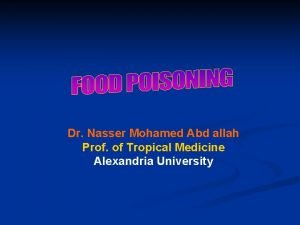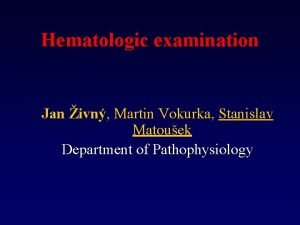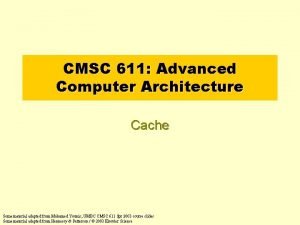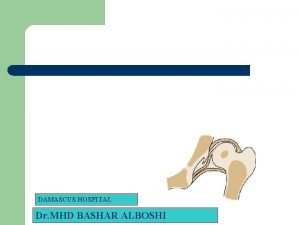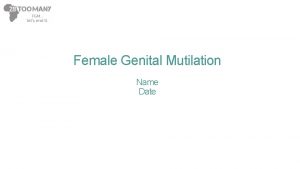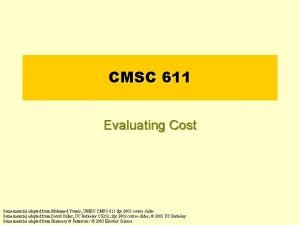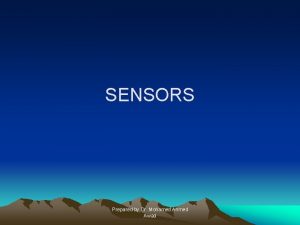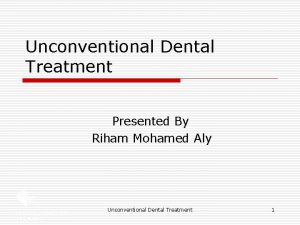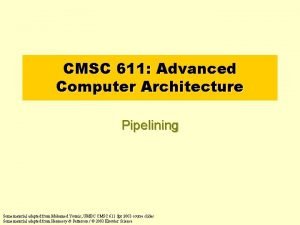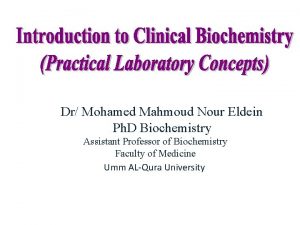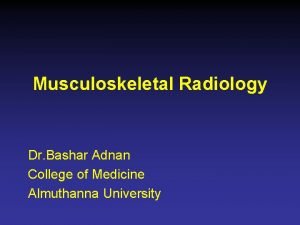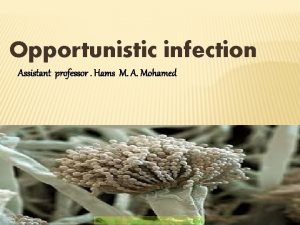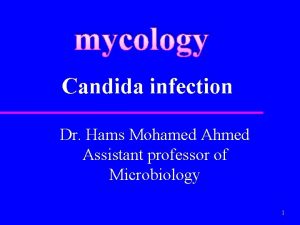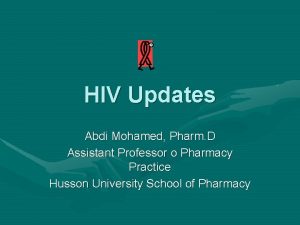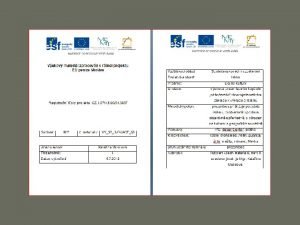Dr Hams M A Mohamed Assistant professor of












































- Slides: 44

Dr. Hams M. A. Mohamed Assistant professor of Microbiology

Mycology (from the Greek mukē, meaning "fungus") is the branch of biology concerned with the study of fungi, including their genetic and biochemical properties, their taxonomy and their use to humans as a source for medicine (e. g. , penicillin), food (e. g. , beer, wine, cheese, edible mushrooms) and as well as their dangers, such as poisoning (mycotoxin) or infection

Fungus v. Widely distributed 100, 000 – 200, 000 species About 300 pathogenic for man v. Eukaryotic developed cellular structure v. Facultative anaerobic/strict aerobic v. Chemotropic, nutrition: by absorption v. Nonphotosynthetic, saprophytic

Special character of fungi o o o Eukaryotic – a true nucleus Do not contain chlorophyll Have cell walls Produce filamentous structures Produce spores

Classification according morphology 1 -Yeast 2 -Mould 3 -Dimorphic

YEAST STUCTURE

YEAST § Unicellular § Microscopic • • • Oval to round (Dia: 3 -15 µm) Reproduce by budding Bud = Blastospore Pseudohyphae (chains of yeast cells) § Macroscopic: Pasty colonies

Example Yeast: Candidasis Small spherical yeasts Ø Budding Ø Pseudohyphae Ø Gastrointestinal, upper Ø respiratory, and genital mucosae Most common human Ø nosocomial infection

MOULD STUCTURE

MOULD • Microscopic Multicellular • Ø Hypha(e) (surface and aerial) Ø Aerial hyphae = Spores • Macroscopic ØSurface texture: ØGlaborous/Cottony/wooly/ ØPigmentation. velvety/ granular. . .

Classification of Hyphae Existence of septa v. Septate v. Non -septate Shape and Morphology v. Racquet ; Spiral v. Nodular ; Root-like (rhizoid) v. Pectinate ; Chandler



DIMORPHIC v. Capable of growing in mould or yeast form under different environmental conditions (temperature, CO 2, nutrients) v. Thermal dimorphism (a group of pathogenic fungi)

Subcellular Structure of Fungi § Capsule (present in some fungi) § Cell wall § Cell membrane § Cytoplasm

CAPSULE Structure: Polysaccharide Functions: Antiphagocytic India Ink Preparation Cryptococcus neoformans (encapsulated yeast)

CELL WALL ØAntigenic in nature ØStructure: Multilayered o Polysaccharides (~90%) o Proteins, glycoproteins (~10%) ØFunctions: o Provides shape, rigidity, strength and protection from osmotic shock

Major polysaccharides of fungal cell wall POLYMER Chitin Chitosan Cellulose -Glucan Mannan MONOMER N-acetyl glucosamine D-Glucose D-Mannose Type & amount vary from species to species

CELLULAR MEMBRANE v. Structure: Bilayered Phospholipids Sterols (ergosterol, zymosterol) v. Functions: Protects cytoplasm Regulates intake & secretion of solutes Facilitates capsule & cell wall synthesis

Reproduction

FUNGAL SPORES Function in reproduction of fungi 1. Sexual reproduction -- Sexual spores 2. Asexual reproduction -- Asexual spores a. Sporulation b. Fragmentation c. Budding 3. Parasexual reproduction -- Genetic exchange

ASEXUAL SPORES 1 -conidia 2. Arthrospore 3. Blastospore 4. Chlamydospore


Blastospore

Aspergillus Species

Rhizopus: sporangium filled with sporangiospores.


SEXUAL SPORES 1. Zygospore 2. Ascospore 3. Basidiospore 4. Oospore

SEXUAL SPORE CLASS Zygospore----- Zygomycetes Basidiospore---- Basidiomycetes Ascospore----- Ascomycetes None/Unknown------ Deuteromycetes (“Fungi imperfecti”)

• Zygospore-----1 -Migration of nuclei will occur in the tips of both progametangia 2 -Septa are laid down at the apex of the progametangia to form isogametangia Zygomycet

3 -Karyogamyimmediately follows to form a multinucleate zygote 4 -The zygote will form a thick, pitted wall around itself to form the zygospore

• Basidiospore---- Basidiomycetes

Ascospore----- Ascomycetes

Stages of ascus formation Ascus mother cell crozier

PATHOGENICITY OF FUNGI 1. Thermotolerance 2. Ability to survive in tissue environment 3. Ability to withstand host defenses

Predisposing Factors v. Antibiotic therapy v. Immunosuppression ØGenetic ØAcquired (agamma globulinemia; steroids) v. Infectious or other diseases (cancer) v. Wounds

Features of Fungus Infections o Not contagious; dermatophytes exception o Opportunistic o Host is predisposed and/or exposed to large number of spores o Infections are chronic with granulomatous lesions

o Cell-mediated immunity - important o Hypersensitivity response may develop o Infections are asymptomatic or selflimited


Fungal Infections Clinical Classification Superficial mycoses Subcutaneous/intermediate mycoses Systemic/deep/endemic mycoses Miscellaneous mycoses/yeasts /Opportunistic

Superficial Mycoses Chest, back, upper arm Rarely invade deeper tissue Malssezia

Cutaneous mycosis Skin, hair and nails • Dermatophytes (Microsporum, tricophyton, epidermiphyton)

Subcutaneous Mycoses Madurella v. Confined to subcutaneous tissue and rarely spread systemically. v. The causative agents are soil organisms introduced into the extremities by trauma.

Systemic Mycoses § Caused by: dimorphic fungi § histoplasma, blastomyces, coccidioides, sporothrix § Involve skin and deep viscera § May become widely disseminated § Predilection for specific organs
 Dr nasser mohamed
Dr nasser mohamed Promotion from assistant to associate professor
Promotion from assistant to associate professor Fok ping kwan
Fok ping kwan Handi hams
Handi hams Remote hams.com
Remote hams.com Alcohol harm reduction worksheets
Alcohol harm reduction worksheets Hams alcohol taper
Hams alcohol taper Hams test
Hams test Power rating
Power rating Mohamed el merouani
Mohamed el merouani Mohamed younis umbc
Mohamed younis umbc Dr mohamed nasr
Dr mohamed nasr Point defects in crystals
Point defects in crystals Dr mohamed bashar shala
Dr mohamed bashar shala Dr. mohammad diab
Dr. mohammad diab Mohamed kossentini
Mohamed kossentini Fahma mohamed
Fahma mohamed Mohamed younis umbc
Mohamed younis umbc Banu hashim family tree
Banu hashim family tree Mohamed akel
Mohamed akel Parallel computing nyu
Parallel computing nyu Mohamed bouhicha
Mohamed bouhicha Riham mohamed aly
Riham mohamed aly Mohamed al-fayed
Mohamed al-fayed Mohamed younis umbc
Mohamed younis umbc Mohamed salah
Mohamed salah Dr qazi omar
Dr qazi omar Mohamed homayed death
Mohamed homayed death Mohamed younis umbc
Mohamed younis umbc Iszlám padisahja 2. mohamed
Iszlám padisahja 2. mohamed Nyu parallel computing
Nyu parallel computing Mohamed merchant
Mohamed merchant Abdelrahman mohamed
Abdelrahman mohamed Mohamed dahoui
Mohamed dahoui Mohamed samir design
Mohamed samir design Mohamed fayad sjsu
Mohamed fayad sjsu Mr mohamed chafik el idrissi
Mr mohamed chafik el idrissi Mohamed akel
Mohamed akel Dr mohamed eldeib
Dr mohamed eldeib Discovering computer
Discovering computer Mohamed younis umbc
Mohamed younis umbc Mohamed samir design
Mohamed samir design Henintsoa georges
Henintsoa georges Mohamed akel
Mohamed akel Dr mohamed bashar shala
Dr mohamed bashar shala
